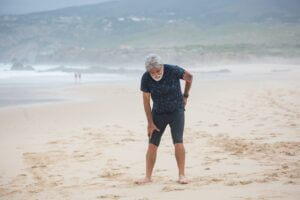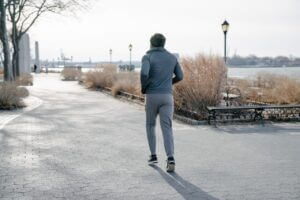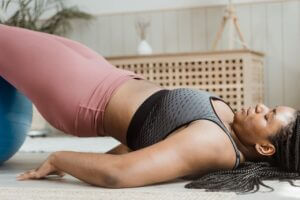Are you ready to take your running to the next level? If you’ve ever been curious about barefoot running, you’re in for a treat. Optimal barefoot running form can unlock a world of benefits, from improved performance to reduced risk of injuries.
In this blog post, we’ll dive into the secrets of mastering barefoot running techniques. Get ready to discover the art of running free, as we explore the key elements that will revolutionize your running experience. Lace-up your shoes (or perhaps not!) as we embark on a journey to optimize your barefoot running form.
Table of Contents
Understanding Barefoot Running Form
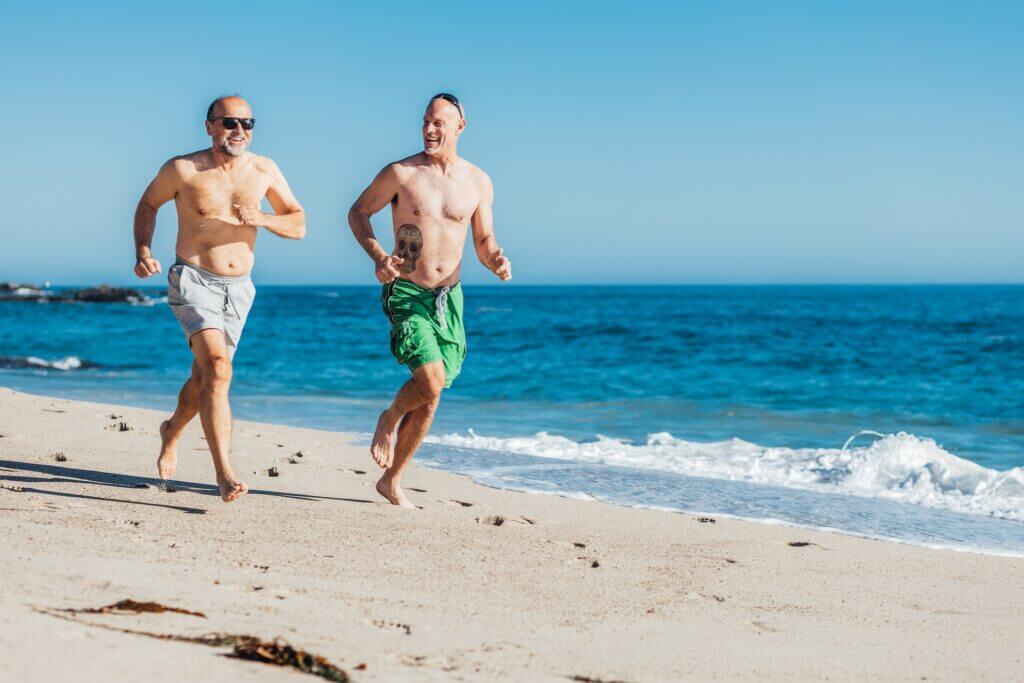
When it comes to barefoot running, understanding proper form is essential. It’s not just about kicking off your shoes and hitting the pavement; it’s about how you engage your body and move in a way that promotes efficiency, strength, and injury prevention. Let’s dive into the basics of barefoot running form and why it matters.
First things first, what exactly is barefoot running form? It’s a technique that mimics the natural movement patterns of our ancestors who ran barefoot or in minimal footwear. By adopting this form, you can optimize your running experience and tap into the many benefits it offers.
So why is barefoot running form so important? Well, it all comes down to biomechanics. When you run barefoot, your feet act as sensory organs, providing valuable feedback to your body. This feedback helps you adjust your stride, landing, and overall movement, leading to a more efficient and natural running style.
To achieve proper barefoot running form, there are a few key elements you need to keep in mind. Let’s break them down:
Foot Placement and Landing Technique
Unlike traditional heel striking, barefoot running encourages a forefoot striking pattern. This means landing on the front part of your foot rather than the heel. Landing on your forefoot allows for better shock absorption and reduces the impact on your joints.
Posture and Body Alignment
Maintaining a good posture while running is crucial for optimizing form. Keep your spine straight, engage your core muscles, and avoid leaning too far forward or backward. This alignment helps distribute the load evenly across your body and prevents unnecessary stress on specific muscles and joints.
Cadence and Stride Length
Cadence refers to the number of steps you take per minute. A higher cadence is generally preferred for barefoot running, as it promotes a shorter stride length and quicker turnover. Aim for a cadence of around 180 steps per minute to reduce overstriding and improve efficiency.
Strengthening and Flexibility
Barefoot running relies on a strong foot and lower leg muscles. Regularly incorporating exercises to strengthen these areas, such as toe curls, calf raises, and barefoot walking, can improve your running form and reduce the risk of injuries. Additionally, maintaining good flexibility through stretches and mobility exercises enhances your overall range of motion.
By understanding these elements and applying them to your barefoot running practice, you’ll be well on your way to mastering the art of barefoot running form. Remember, it’s a journey that requires practice and patience, but the rewards are worth it!
In the next section, we’ll delve into specific techniques for foot placement and landing to help you perfect your barefoot running form. Stay tuned and get ready to take your running to a whole new level!
Foot Placement and Landing Techniques
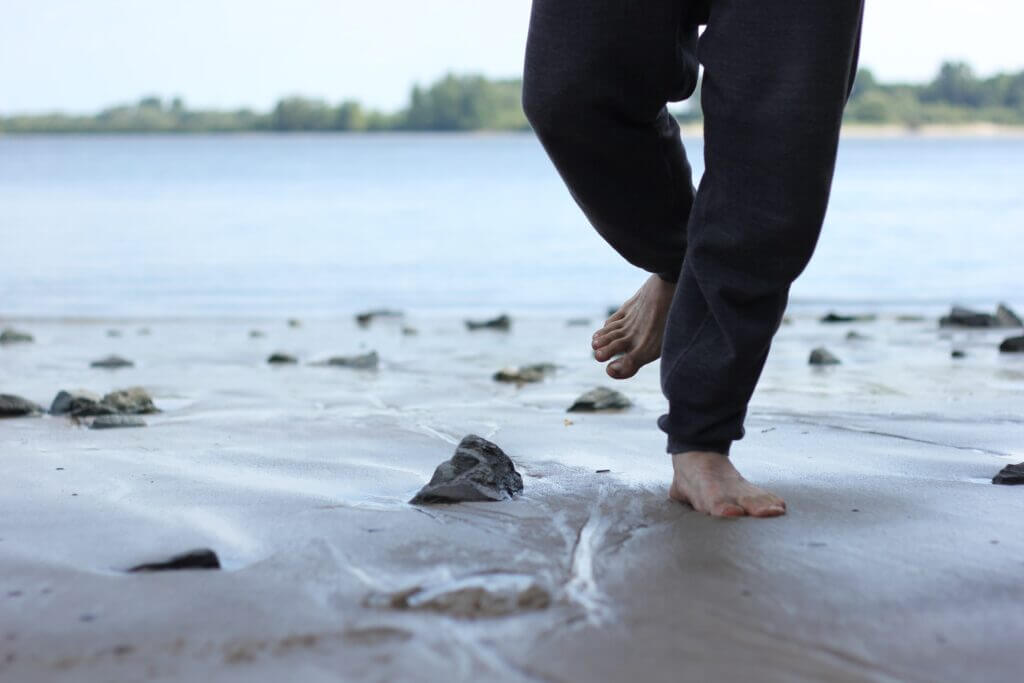
When it comes to optimizing your barefoot running form, one of the crucial aspects to focus on is your foot placement and landing technique. How your feet interact with the ground can make a significant difference in your overall running experience. So, let’s dive into some friendly tips to help you master this important element.
Embrace Forefoot Striking
Picture this: you’re running barefoot, and as your foot touches the ground, you aim to land on the ball of your foot or the forefoot, rather than your heel. This technique is known as forefoot striking and is widely recommended for barefoot running. It allows for a smoother transition and helps absorb the impact more efficiently, reducing the stress on your joints.
Mind Your Foot Placement
As you take each stride, pay attention to where your foot lands about your body. Aim for a foot strike that’s directly underneath your center of mass, rather than stretching out in front of you. This alignment promotes stability and balance while minimizing the risk of overstriding, which can lead to injuries.
Gradual Transition
If you’re new to barefoot running or transitioning from traditional running shoes, it’s essential to allow your body time to adapt. Start by incorporating short barefoot runs into your routine and gradually increase the duration and intensity over time. This approach helps strengthen the muscles and tendons in your feet and lower legs, preparing them for the unique demands of barefoot running.
Listen to Your Body
Everyone’s body is unique, and what works for one person may not work for another. Pay attention to how your feet and legs feel during and after each run. If you experience pain or discomfort, it could be a sign that your foot placement or landing technique needs adjustment. Don’t hesitate to make the necessary tweaks and consult with a running coach or podiatrist if needed.
Seek Feedback
Sometimes, a fresh pair of eyes can offer valuable insights. Consider asking a knowledgeable friend or a running expert to observe your running form. They can provide feedback on your foot placement and landing technique, helping you fine-tune your form.
Remember, mastering barefoot running form is a journey, not an overnight accomplishment. It takes practice, patience, and a willingness to listen to your body. So, lace up your shoes (or take them off!) and get ready to embark on a remarkable adventure that can revolutionize your running experience.
Posture and Body Alignment

Maintaining proper posture and body alignment is crucial when it comes to optimizing your barefoot running form. Not only does it help improve efficiency, but it also reduces the risk of injury. So, let’s dive into some friendly tips on how to achieve the right posture and body alignment during your barefoot runs.
First things first, imagine a string pulling you up from the top of your head. This visualization can help you lengthen your spine and promote an upright posture. Avoid slouching or leaning too far forward or backward, as it can disrupt your running form and put unnecessary strain on your body.
Next, pay attention to your head position. Keep your gaze forward, looking straight ahead rather than at the ground. This helps maintain proper alignment throughout your entire body and promotes a more efficient stride.
Moving down to your shoulders, relax them and avoid tensing them up. Let them naturally fall back and down, away from your ears. Tense or elevated shoulders can lead to muscle tension and restrict your range of motion, hindering your barefoot running experience.
Now, focus on your arms and hands. Your arms should be bent at around a 90-degree angle, swinging naturally back and forth with the rhythm of your strides. Keep your hands relaxed and avoid clenching your fists. Lightly cup your hands, as if you’re holding delicate objects, to maintain a relaxed and fluid motion.
As for your torso, engage your core muscles. A strong core provides stability and helps maintain good posture throughout your run. Imagine a straight line running from your head down to your hips, with your abdominal muscles gently activated to support your spine.
Lastly, let’s talk about your lower body. Keep your hips aligned and facing forward. Avoid excessive twisting or rotation, as it can throw off your balance and strain your joints. Aim for a smooth and controlled movement from your hips as you propel yourself forward.
Remember, practice makes perfect! Initially, it may feel a bit unnatural to focus on your posture and body alignment while running, but with time and practice, it will become second nature. Paying attention to these aspects of your form will not only enhance your barefoot running experience but also contribute to your overall running performance.
So, as you hit the barefoot running trails, keep your head up, shoulders relaxed, arms swinging, core engaged, and hips aligned. Enjoy the freedom and benefits of barefoot running with proper posture and body alignment by your side!
Cadence and Stride Length
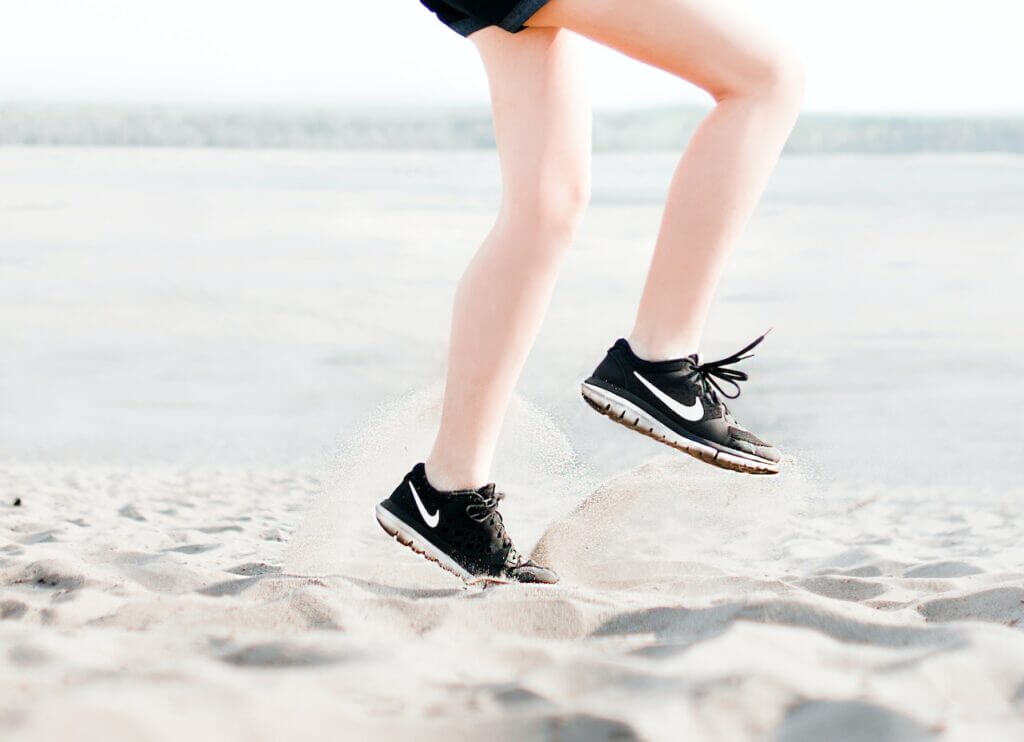
When it comes to barefoot running, two essential factors that can make a big difference in your form are cadence (step rate) and stride length. Let’s take a closer look at why these elements matter and how you can make adjustments to optimize your barefoot running experience.
Cadence refers to the number of steps you take per minute. It’s a vital aspect of running form that can help improve efficiency and reduce the risk of injuries. Studies have shown that a higher cadence is often associated with better running form, especially when it comes to barefoot running. So, how can you find your ideal cadence?
Start by focusing on gradually increasing your step rate. Aim for a cadence of around 170-180 steps per minute, as this range tends to work well for many barefoot runners. Of course, individual factors such as height, leg length, and running speed can also influence the optimal cadence. One way to gauge your cadence is by counting the number of steps you take with one foot for 30 seconds and then doubling that number. If your cadence falls below the recommended range, it’s a good idea to work on increasing it.
Now, let’s discuss stride length. Stride length refers to the distance covered with each step. While it may seem tempting to take longer strides, especially when trying to go faster, overstriding can lead to inefficient form and increased stress on your joints. For barefoot running, it’s important to focus on a more natural and balanced stride length.
Instead of trying to take long strides, aim for shorter, quicker steps. This allows your foot to land closer to your body’s center of mass, reducing the impact on your joints. Additionally, focusing on a midfoot or forefoot landing can help distribute the forces evenly and promote a more efficient barefoot running form.
Finding your optimal stride length is a personal journey. It’s about finding a balance between efficiency and comfort. Avoid excessive reaching with your leading leg and landing heavily on your heels. Instead, concentrate on a light and springy landing, with your foot rolling smoothly from the midfoot to the forefoot.
Keep in mind that mastering cadence and stride length may take some time and practice. It’s essential to listen to your body and pay attention to any discomfort or pain. If you experience any issues, it might be a sign that you need to make further adjustments or seek guidance from a professional.
By increasing your cadence and focusing on shorter, quicker strides, you’ll gradually develop a more efficient and natural barefoot running form. Embrace the process, be patient with yourself, and enjoy the unique sensations that barefoot running has to offer.
Strengthening and Flexibility Exercises
Building strength and flexibility in your feet and lower legs are crucial for mastering barefoot running form. Here are some exercises that will help you achieve just that:
1. Toe Curls
Sit comfortably and place a towel or small cloth on the floor in front of you. Use your toes to grip the towel and scrunch it towards you. Repeat this exercise for several sets, gradually increasing the resistance by using a thicker towel or cloth.
2. Calf Raises
Stand with your feet hip-width apart, and slowly rise onto your toes, lifting your heels off the ground. Hold for a moment, then lower your heels back down. Perform several sets of calf raises, gradually increasing the number of repetitions as your strength improves.
3. Ankle Circles
Sit on the edge of a chair with one leg extended in front of you. Slowly rotate your ankle clockwise for 10 to 15 repetitions, and then switch to counterclockwise. Repeat the same on the other leg. Ankle circles help improve ankle mobility and strengthen the muscles around the joint.
4. Heel Drops
Stand on a step or elevated platform with your heels hanging off the edge. Slowly lower your heels below the step, feeling a gentle stretch in your calves. Rise back up onto your toes. Perform several sets of heel drops, gradually increasing the depth of the stretch as your flexibility improves.
5. Barefoot Walking
Take advantage of safe, barefoot-friendly surfaces such as grass or sand. Walk barefoot for short distances to engage the muscles in your feet and lower legs, promoting strength and stability.
Remember, consistency is key when it comes to these exercises. Aim to incorporate them into your regular training routine, starting with a manageable number of repetitions and gradually increasing as your body adapts.
Progression and Gradual Transition

As you embark on your barefoot running journey, it’s important to approach it with a gradual and progressive mindset. Here are some tips to guide you through the transition:
1. Start Slow
Begin with short barefoot runs on soft and forgiving surfaces like grass or a rubber track. Start with just a few minutes and gradually increase the duration over time. This allows your body to adapt to the new demands of barefoot running.
2. Listen to Your Body
Pay attention to any discomfort or pain during and after your barefoot runs. It’s normal to experience some muscle soreness as you engage new muscles, but sharp or persistent pain could indicate an issue. If needed, take extra rest days or seek advice from a healthcare professional.
3. Mix It Up
Alternate between barefoot running and running in minimalist shoes to provide variation and gradually strengthen your feet and lower legs. This helps prevent overuse injuries and allows for a smoother transition.
4. Monitor Progress
Keep a journal or use a running app to track your progress. Note any changes in your running form, improvements in strength and flexibility, and any adjustments you make along the way. This will help you stay motivated and celebrate your achievements.
5. Be Patient
Transitioning to barefoot running takes time. Rome wasn’t built in a day, and neither will your barefoot running form be perfected overnight. Embrace the journey, enjoy the process, and trust that with consistent practice, you’ll see improvements.
Remember, optimizing your barefoot running form is a lifelong commitment. Continue to prioritize strength and flexibility exercises, and be mindful of maintaining good running habits. With persistence and dedication, you’ll reap the rewards of improved performance and reduced risk of injuries. Happy barefoot running!
Common Mistakes and Troubleshooting
When it comes to barefoot running form, even the most experienced runners can make some common mistakes. Don’t worry, though! Let’s explore these mistakes together and discuss some troubleshooting tips to help you overcome them.
1. Overstriding
One of the most prevalent mistakes is overstriding, where you take excessively long strides. This can lead to increased impact and inefficient energy transfer. Instead, focus on shorter, quicker strides with a higher cadence. Aim for light, quick steps that allow your feet to land beneath your body.
Troubleshooting tip — Practice running on a soft surface, such as grass or a track, which can naturally encourage shorter strides. Pay attention to your foot placement and aim for a mid-foot or forefoot strike to prevent overstriding.
2. Heel Striking
Landing on your heels while barefoot running can put excessive stress on your joints and hinder your running form. It’s crucial to avoid striking the ground with your heels first.
Troubleshooting tip — Focus on landing softly on the mid-foot or forefoot. Imagine rolling smoothly from heel to toe, using your foot’s natural arch as a shock absorber. Gradually strengthen your lower leg and foot muscles to support this adjustment.
Poor posture not only affects your form but also reduces your running efficiency. Slouching can strain your muscles, leading to fatigue and potential injuries.
Troubleshooting tip — Maintain an upright posture while running. Imagine a string pulling you up from the top of your head, aligning your ears, shoulders, and hips. Engage your core muscles and relax your shoulders, allowing your arms to swing naturally by your sides.
4. Inadequate Core Engagement
Neglecting your core muscles can contribute to inefficient movement and compromised stability. A weak core can affect your balance and overall running form.
Troubleshooting tip — Incorporate core-strengthening exercises into your training routine. Planks, Russian twists, and mountain climbers are great exercises to target your core muscles. A strong core will help you maintain proper body alignment and stability while running.
5. Neglecting Foot and Lower Leg Strength
Your feet and lower legs play a crucial role in barefoot running. Neglecting their strength can lead to instability and potential injuries.
Troubleshooting tip — Perform exercises to strengthen your feet and lower leg muscles. Try toe curls with a towel, calf raises, and single-leg balances. Gradually increase the intensity and duration of these exercises to build strength and stability.
Remember, mastering barefoot running form takes time and practice. Be patient with yourself and focus on making gradual improvements. Listening to your body and being mindful of these common mistakes will help you refine your technique and optimize your barefoot running experience.
By avoiding these common pitfalls and troubleshooting any challenges that arise, you’ll be well on your way to running with better form, greater efficiency, and reduced risk of injury.
Conclusion
In conclusion, optimizing your barefoot running form is a transformative journey that can elevate your running experience to new heights. By mastering the techniques discussed in this blog post, you can unlock your true potential and discover a sense of freedom, efficiency, and connection with the ground beneath your feet.
Remember, perfecting your barefoot running form takes practice, patience, and a gradual transition. Embrace the process and celebrate every stride forward, knowing that each step brings you closer to becoming a more efficient, injury-resistant, and mindful runner.
So, lace up your minimalist shoes or peel off your socks, step out onto the open road or the soft trails, and let your feet guide you toward a newfound running nirvana. Embrace the joy of barefoot running, where each footfall becomes a dance of strength and grace, and where the freedom of the open road merges with the harmonious rhythm of your optimized barefoot running form.
Unleash the power within you, run with purpose, and let your bare feet carry you to places you never thought possible.
